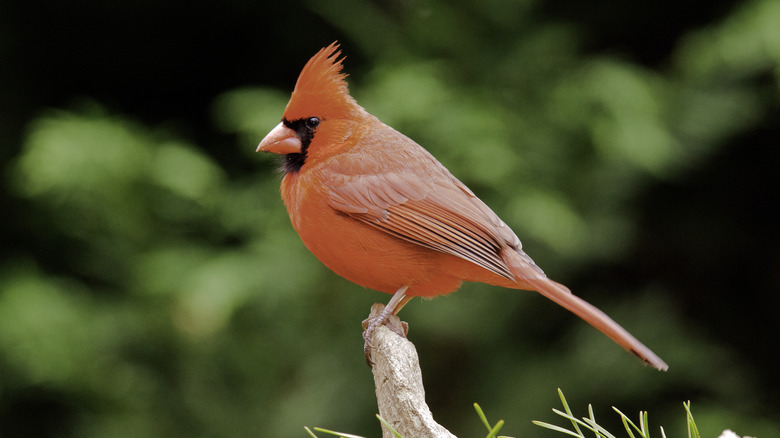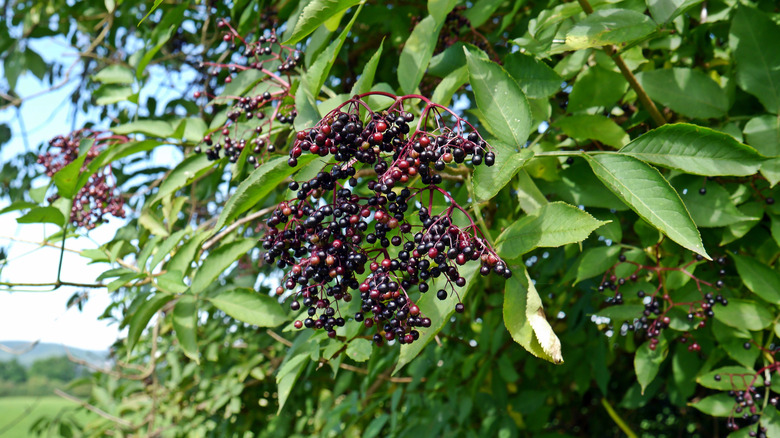Watch Cardinals & Other Birds Soar To Your Yard For This Fast-Growing Berry Tree
If one of your gardening goals is attracting the scarlet-hued cardinal to your yard — along with a few other feathered friends – plants, shrubs, and trees bearing fruits and berries are tried and true backyard winners. Cardinals get their color from the carotenoids in their diet, so the fruits they eat are one of the things that make them bright red and beautiful. What's one of the fruit laden trees that will have cardinals flocking to your yard? Look to the elderberry (Sambucus spp.), which can be a shrub of varying sizes or a small tree when it grows taller.
Elderberry suits cardinals perfectly since they put on an abundance of fruits that look like berries hanging in bountiful clusters. In addition to cardinals, other birds like grosbeaks, tanagers, bluebirds, robins, and phoebes will also frequent elderberry bushes to supplement their diets. In the springtime, when the trees are filled with an abundance of blooms, insects are attracted to them, and that can increase the likelihood of birds visiting, too. This includes attracting cardinals to your yard, since these omnivores get their sustenance from both plants and animals. As a bonus, elderberry is considered easy to grow with proper nurturing and you can pick up containers ready for planting from garden centers in the springtime.
More on growing elderberry trees
There are two main types of elderberry grown in North America: American elderberry (Sambucus canadensis) and European elderberry (Sambucus nigra). American elderberry, a shrub that grows from 5 to 12 feet in height, blooms from mid-June through mid-July and then produces fruit in August and September. European elderberry is similar but more like a tree in appearance and a little less cold tolerant. The other big difference is that European elderberry is an ornamental that can be difficult to encourage fruit production. So, be sure you're planting a fruit-bearing variety that's easier to work with when bringing more birds to your yard, which typically grow best in zones 4 to 8.
When growing an elderberry purchased from a garden center, wait until the last spring frost has passed to plant but early enough to have it established before summer sets in. It will eventually produce more fruit if planted in a location with full sun. The soil should drain well and, if needed, be enhanced to make it more nutrient-rich before getting started. Elderberry tends to spread, so give it plenty of space between plants — about 4 feet in each direction. Water 1 to 2 inches weekly as summer heat progresses and plan on pruning your elderberry each year while it's still dormant. Keep in mind that these plants do grow fast, but they won't produce fruit right away. It takes a couple of years of nurturing before that happens. The effort can be worth the reward, though, when beautiful cardinals and other birds start visiting to feast on the fruit.

